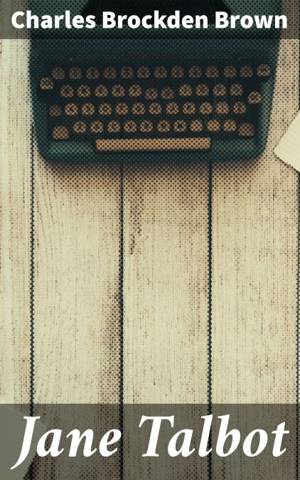
- Afhalen na 1 uur in een winkel met voorraad
- Gratis thuislevering in België vanaf € 30
- Ruim aanbod met 7 miljoen producten
- Afhalen na 1 uur in een winkel met voorraad
- Gratis thuislevering in België vanaf € 30
- Ruim aanbod met 7 miljoen producten
Zoeken
Jane Talbot E-BOOK
Love, Loss, and Redemption: A Gothic Tale of 18th Century America
Charles Brockden Brown
E-book | Engels
€ 0,49
Uitvoering
Omschrijving
In "Jane Talbot," Charles Brockden Brown delves into the intricacies of the American psyche at the dawn of the 19th century. This epistolary novel weaves a complex narrative surrounding its titular character, exploring themes of identity, autonomy, and moral ambiguity. Brown's literary style is marked by a profound use of psychological realism, employing a sophisticated, fragmented narrative that reflects the anxieties of the early Republic. As a precursor to American Gothic, the novel also encapsulates the era's fascination with melacholia and uncertainty, drawing on contemporary philosophical discourses and the burgeoning romantic movement. Charles Brockden Brown, often hailed as the first American novelist, was deeply influenced by the socio-political upheavals of his time, including the Revolutionary War and the burgeoning ideas of individualism and enlightenment. His own life experiences as a Quaker and his engagement with radical Enlightenment thought illuminate his characters' struggles with moral dilemmas and societal constraints, making "Jane Talbot" a poignant reflection of his convictions and the tumultuous context in which he wrote. I highly recommend "Jane Talbot" to readers interested in early American literature and the psychological dimensions of character development. Brown'Äôs adept narrative technique and rich thematic exploration not only provide a compelling reading experience but also invite readers to reflect on the broader implications of personal freedom and societal expectation in shaping one's identity.
Specificaties
Betrokkenen
- Auteur(s):
- Uitgeverij:
Inhoud
- Aantal bladzijden:
- 268
- Taal:
- Engels
Eigenschappen
- Productcode (EAN):
- 4064066197667
- Verschijningsdatum:
- 10/12/2019
- Uitvoering:
- E-book
- Beveiligd met:
- Digital watermarking
- Formaat:
- ePub

Alleen bij Standaard Boekhandel
Beoordelingen
We publiceren alleen reviews die voldoen aan de voorwaarden voor reviews. Bekijk onze voorwaarden voor reviews.








